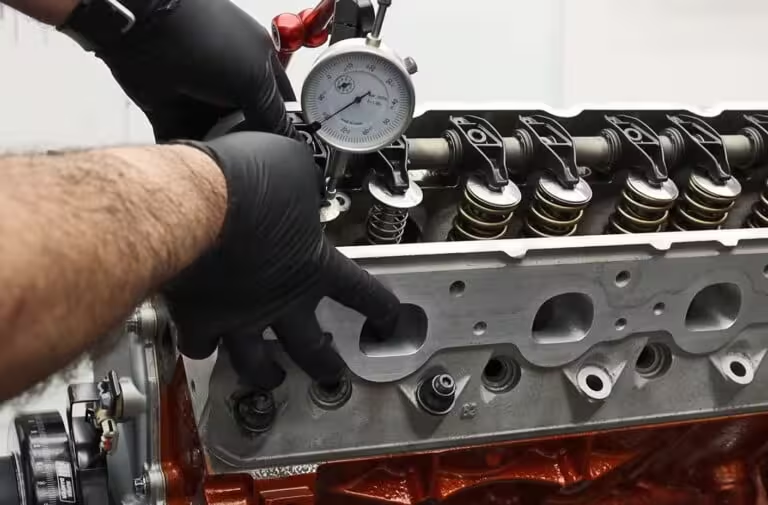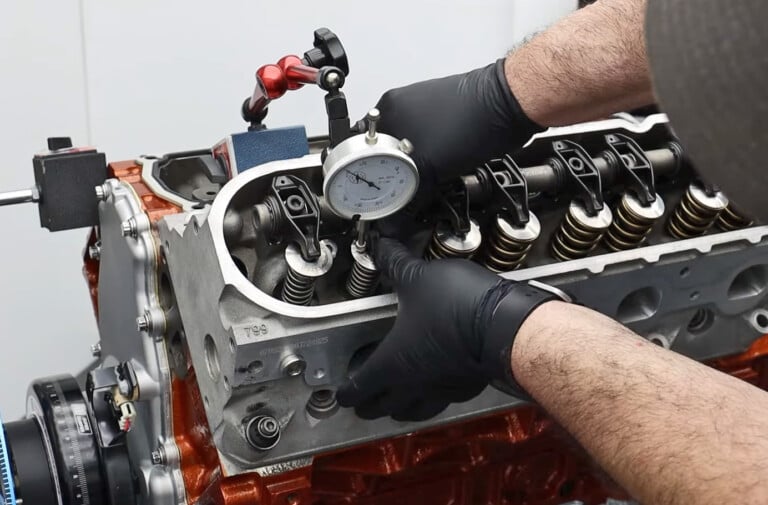Several months ago, we brought you LS5.0’s bottom-half coming to life. Now, we’re bringing you the top half of the engine project as it comes together. For a quick refresher, Project LS5.0 is our attempt to match, and possibly beat, the Coyote engine from the original LS vs Coyote shootout.
With the short-block assembled and ready to go, the next step for us was to finish assembling the top half of the engine. Just like the short-block’s components, we put a lot of effort into striking a balance between staying within the original $9,999 (2016 dollars) budget and getting the LS engine to perform in the upper RPM band, reliably.
Checking Piston-To-Valve Clearance
The first thing we needed to do was to check piston-to-valve clearance. In a custom application like this, you can’t just look at cam specs and guess as to whether or not the valves will clear the pistons — especially since we have domes on the piston, small as they might be. There are several ways to check the actual clearance; our chosen method is with a degree wheel and checking springs.
In order to check piston-to-valve clearance at specific crankshaft positions, we need to swap the intake and exhaust valvesprings on cylinder one to lightweight checking springs, so that we can move the valves with only finger pressure. This also has the secondary benefit of not introducing any deflection into the valvetrain, since there isn’t a lot of pressure.
You might think that you simply want to check clearance at the top of the piston’s travel, but in reality, That’s not where the valve and piston are the closest. On the intake valve, the piston and valve are the closest as the intake valve chases the piston down the bore on the intake stroke, so we measure at 10 degrees after top dead center on the intake stroke.
On the left, you can see that we measure .120 inch of piston to valve on the intake and on the right you can see we get .190 inch of clearance on the exhaust.
The minimum clearance we’re looking for in a combination like LS5.0 is .080 inch. The dial indicator shows that we have .120 inch of clearance. Since that measurement is without a head gasket in place, we know we can add another .040 inch to that number, and since we’ll likely be retarding cam timing on the dyno, our intake valve clearance will only increase.
On the exhaust side, the closest the valve gets to the piston is as the…
Click Here to Read the Full Original Article at DragzineDragzine…


